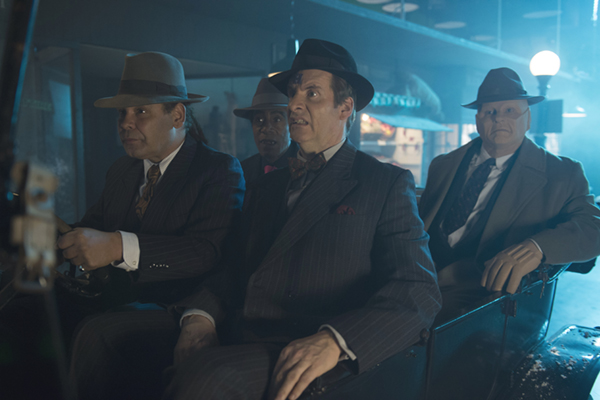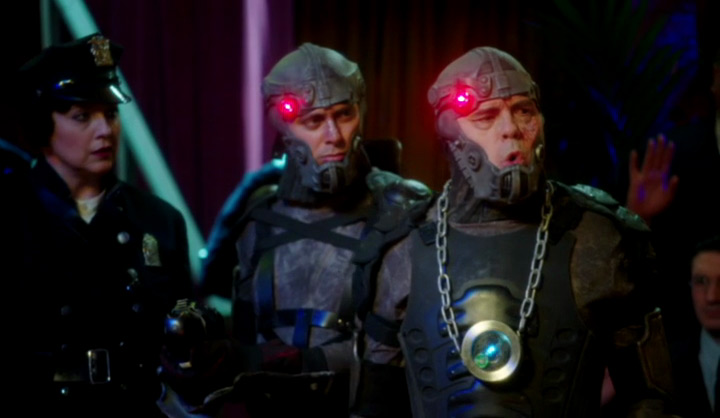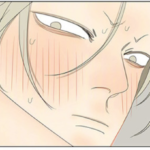
Red Dwarf Series XI Episode 1: Twentica
Written & Directed by Doug Naylor
Starring Craig Charles, Chris Barrie, Robert Llewellyn, Danny John-Jules
Review by Billy Seguire
Once again finding itself at the start of a new series, Red Dwarf returns much as we left it in 2012. While it wasn’t as gut-wrenchingly funny as some of the better moments of the previous series, Twentica entertained while adding style, drama, and sci-fi indulgence to the mix. Solid vibes coming from the cast make Twentica feel like it belongs somewhere in series six, and it delivers everything it promises in a well constructed time-travel narrative. Compared with Trojan at the start of the tenth series of Red Dwarf, Twentica is far more ambitious, pointing towards a bigger series more full of new space adventures for the last smegheads left in the universe.
From the opening scenes alone, it’s obvious that this is Red Dwarf cut loose from the limits of budget. The boys begin on Starbug, meaning that we’re treated to some seriously beautiful model shots of the ship travelling haphazardly through space, culminating in a crash that looks leagues better than anything that could have been done with CGI. I can’t help but be impressed. While shots of planets and nebulas are still definitely computer generated, those stiff, realistic models warm my heart and helps the episode keep a firm connection to the classic series. Red Dwarf started with those models. They’re a part of its tradition. Their use in Twentica speaks of a series that’s looking better than ever.
Hailed by an unknown ship, a new threat, the Expanoids, offer to make an exchange with the crew of Starbug for a hostage. Perfectly in character, Rimmer is completely opposed to negotiating with the hostage-takers until it’s revealed that the hostage is himself. It’s the sort of joke where the punchline gets telegraphed almost immediately, but is made whole by the performance. The Cat’s incessant dismissal of Rimmer’s well-being is equally hilarious. Danny John-Jules has lost absolutely nothing in the intervening years and this opening scene brings everyone’s dynamic back with instant success.
Borrowing more than a little from the plot of First Contact, Starbug soon goes hurtling through a time vortex in pursuit of the Expanoid ship. That approach unravels in a sequence where both Kryten and Rimmer go offline as Starbug’s electronics fail. The inclusion of the models makes this sequence dangerously exciting, and when Starbug makes its impact, the classic beauty of this series shines. I even love how it’s a running joke through this episode that Rimmer constantly has to be reminded that he’s electronic. Even after all these years, Arn? You think that you’d be used to it by now.
From here on, Lemons is the template that makes this episode work structurally by dumping our crew in a strange time and teaming them up with someone whom we don’t quite expect. I was worried when I thought they were talking to Einstein. I was delighted when it turned out to be Bob the Bum. That switch gives Red Dwarf the room it needs play around with a famous image without it being too cute or improbable that they actually ran into him. Shades of a mediocre JFK impersonator in series seven spring to mind. Bob isn’t as memorable as Jesus from Lemons, but the mechanics of this story are far more plot-based and appropriately shifts the focus elsewhere.

Costuming is a strong point for Twentica, and the show deserves to be recognised for just how good it makes everyone look. It would look odd to see these characters go on for so many years without making any changes, but the changes made to each costume are true to the character and allows the characters to mature naturally. Lister is less the young punk he once was and looks more like the aging has-been you see still hanging ’round the pub. That leather jacket he’s been wearing since Dave started making new episodes looks like its seen as many adventures and Currys as Lister. While I did notice the new headpiece for Kryten in the promo photo, once the episode got rolling I didn’t notice unless I looked for it. it’s the exact situation we all went through during series ten, and I’m glad I waited until the episode to pass final judgement. Hopefully Robert Llewellyn is a little more comfortable under there now that it’s been widened out.
But it’s the clothing change midway through the episode that makes the costume department really shine. After a quick trip to a menswear store, each of the gang is dressed in pristine Prohibition-era suits, and each gets subtle variations on their costume which reflect their personalities. Cat has a sharp suit with a pink tie to reflect his stylish nature, Rimmer is in a bowtie, Lister looks like he belongs in the mafia, and Kryten looks a heck of a lot like Jake Bullet. Although it might have come off as pandering, I actually kind of wish they had taken the time to make the reference (God knows they did it enough times with Duane Dibbley) but for now I’ll just read my Jake Bullet comics and be glad they at least made the effort with the costume.
It’s not just our boys who shine either. Lucie Pohl gets some good laughs into the episode as Harmony, making her the standout character of this episode apart from the regular cast. I loved her constant science references and the way she was able to spout that technobabble was flawless. Brian Fuller, give this woman a role on Star Trek. The fact that she was able to make it funny, especially in the joke about the cop being dense, was icing on the cake. In fact, I loved that whole concept of an America that bans technology. The concept isn’t explored deeply, but this is Red Dwarf we’re talking about here, not Doctor Who. I did love how the show lampshaded that it was a cliche, and a running gag about that pays off later with Craig Charles acting with perfect disdain as he calls it out. The scene where policemen smash a toaster with their batons was probably my favourite ridiculous moment of the whole episode. I mourn for Talkie Toaster.

I would be remiss if I didn’t comment on the villains of the piece. The Expanoids are mechanoids who can double their transistor power every two years. With added depth, this is a more interesting villain than the simulants the crew of Red Dwarf are used to coming up against. It’s satisfying to see that Red Dwarf still has an interest in adding to its universe and lore after all these years, and the episode is stronger for it. The Borg-inspired names sat a little wrong with me at first, but once I realised Twentica was essentially a full-on First Contact parody, it felt like the perfect choice. Terribly imposing in their capabilities, it’s fantastic to see Team Smeghead face an actual threat, especially when an unexpected line delivery near the end makes me laugh as hard as I did.
Only the score gave me mixed emotions this time around. While Howard Goodall has provided amazing cues to Red Dwarf over the years, certain music choices in Twentica simply didn’t make any sense to me, such as the series one theme coming in as Lister assesses the damage following Starbug’s crash. As much as I love that track, I didn’t think it was appropriate. It’s a track that speaks of being alone in the endlessness expanse of space, not the cramped quarters of Starbug. Instead of feeling like a return to form, that moment felt tacked on for nostalgia’s sake.
The Verdict:
Watch It. Although Twentica was a bizarre choice for the first episode of a new series, the premiere is still quality Red Dwarf that takes the best bits from the previous series and uses them to revisit a classic era of time-hopping adventure. The humour felt authentic to the series and there were multiple quotes from characters that had me genuinely laughing in the right moments. The characters have matured with age, but Red Dwarf still hasn’t lost its edge. If you haven’t watched Twentica yet, leg it.



